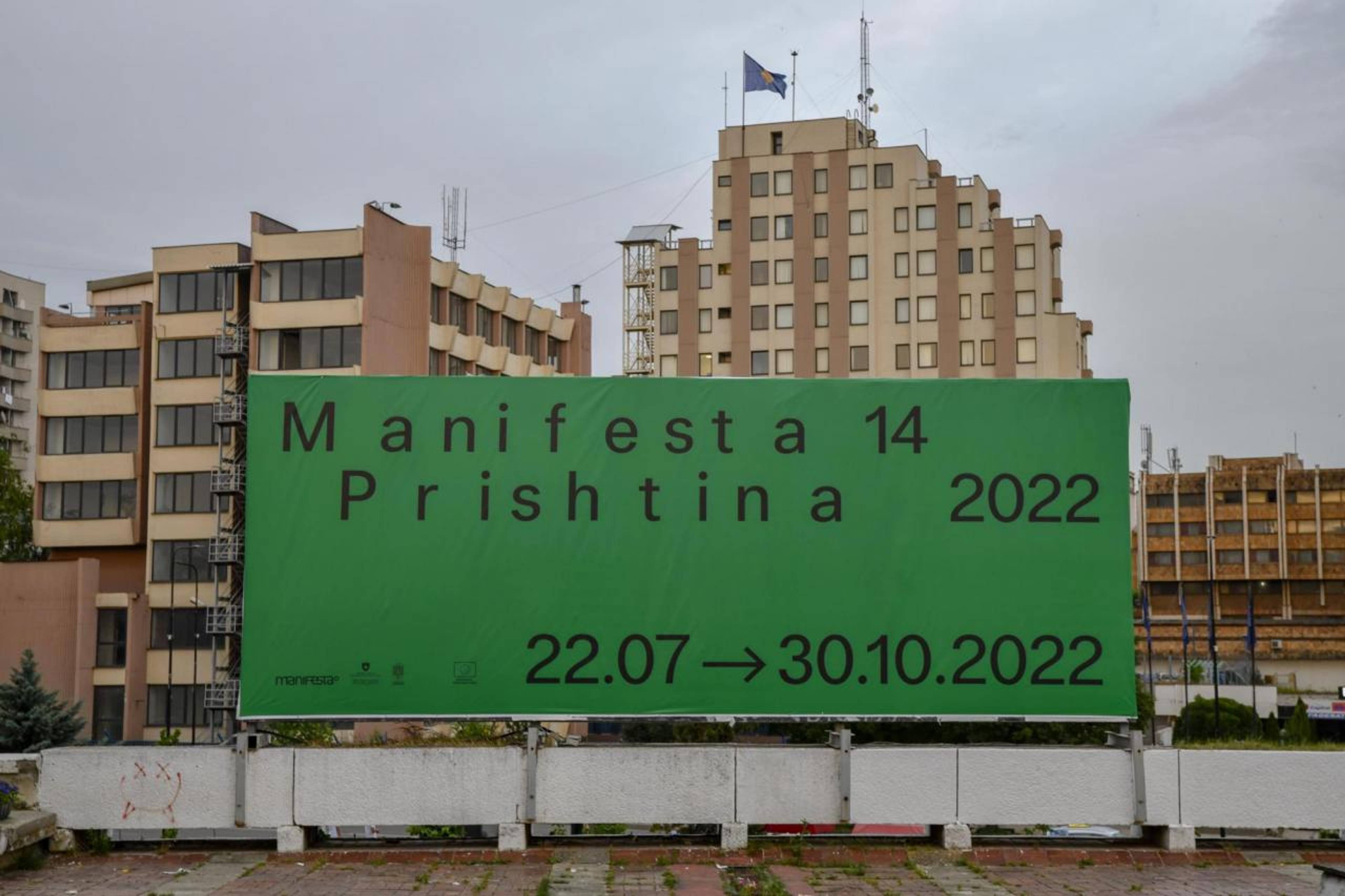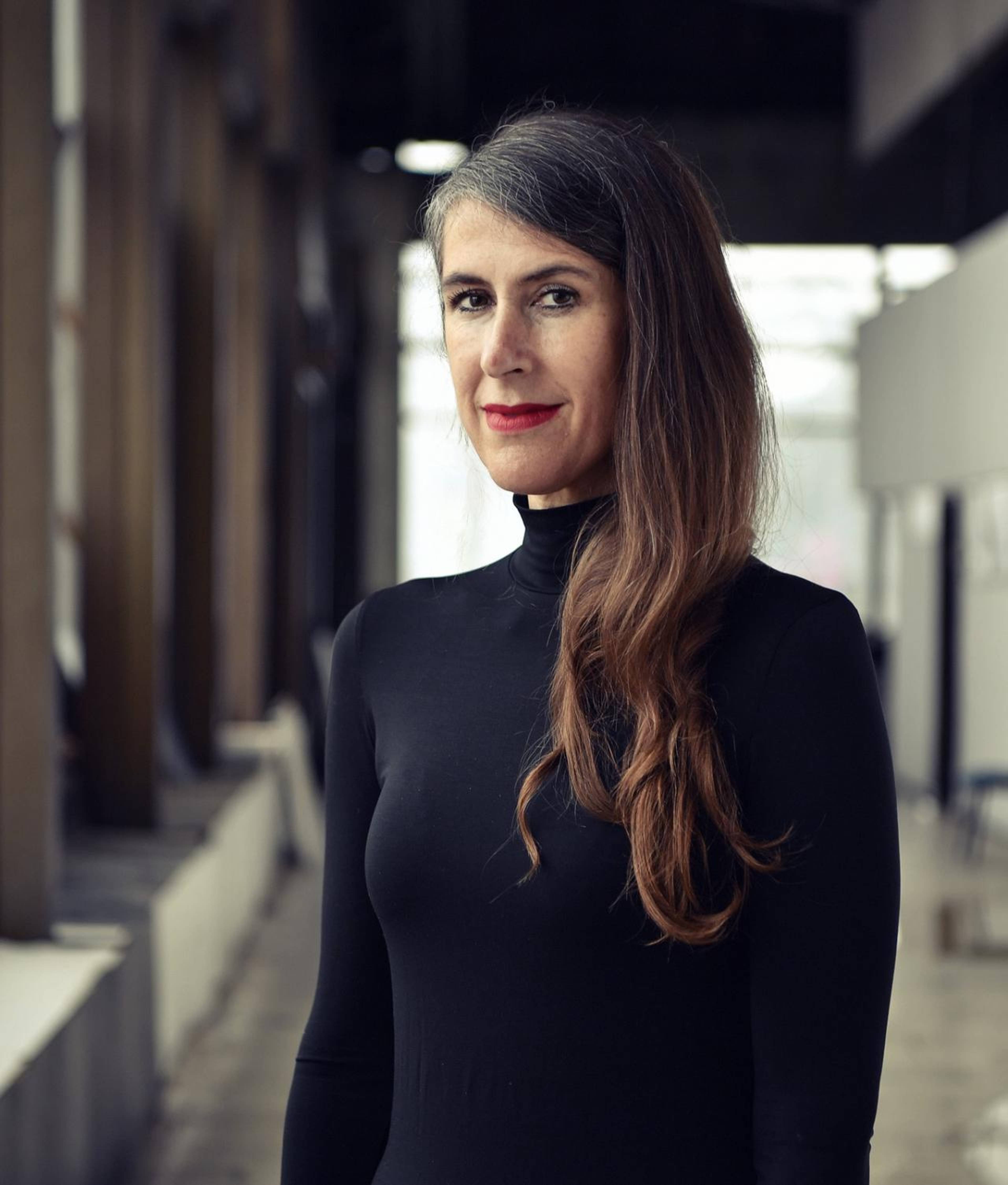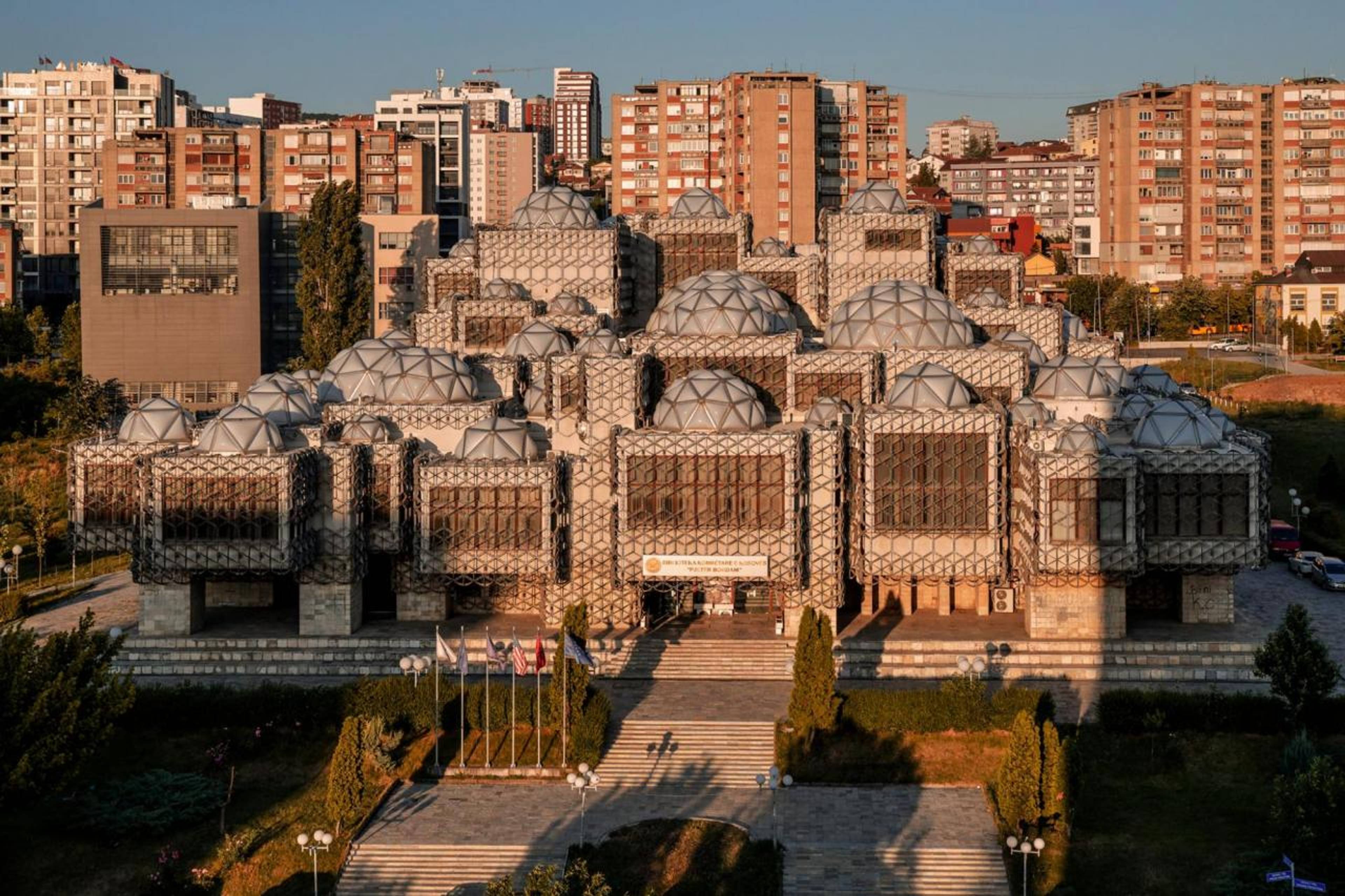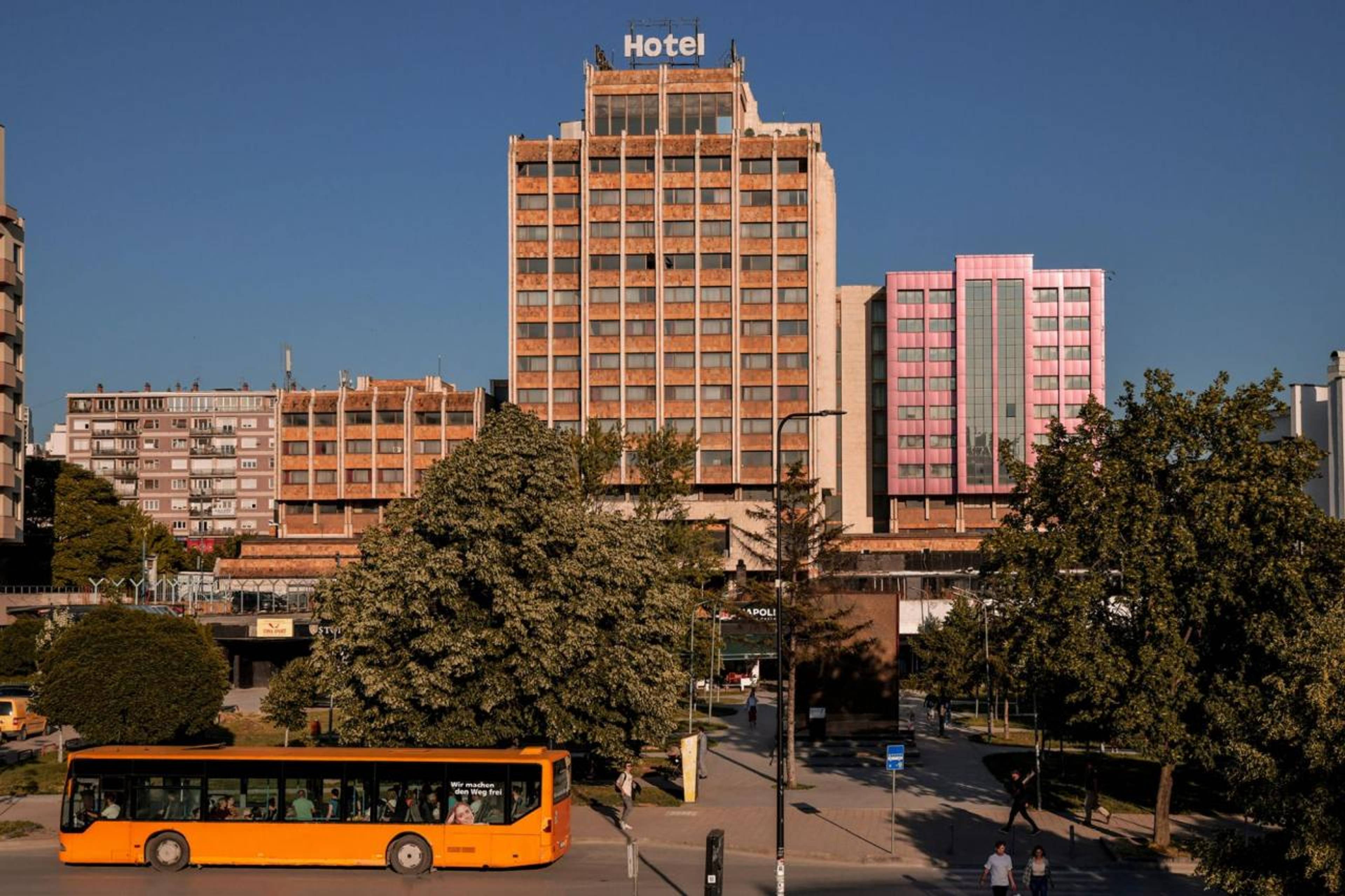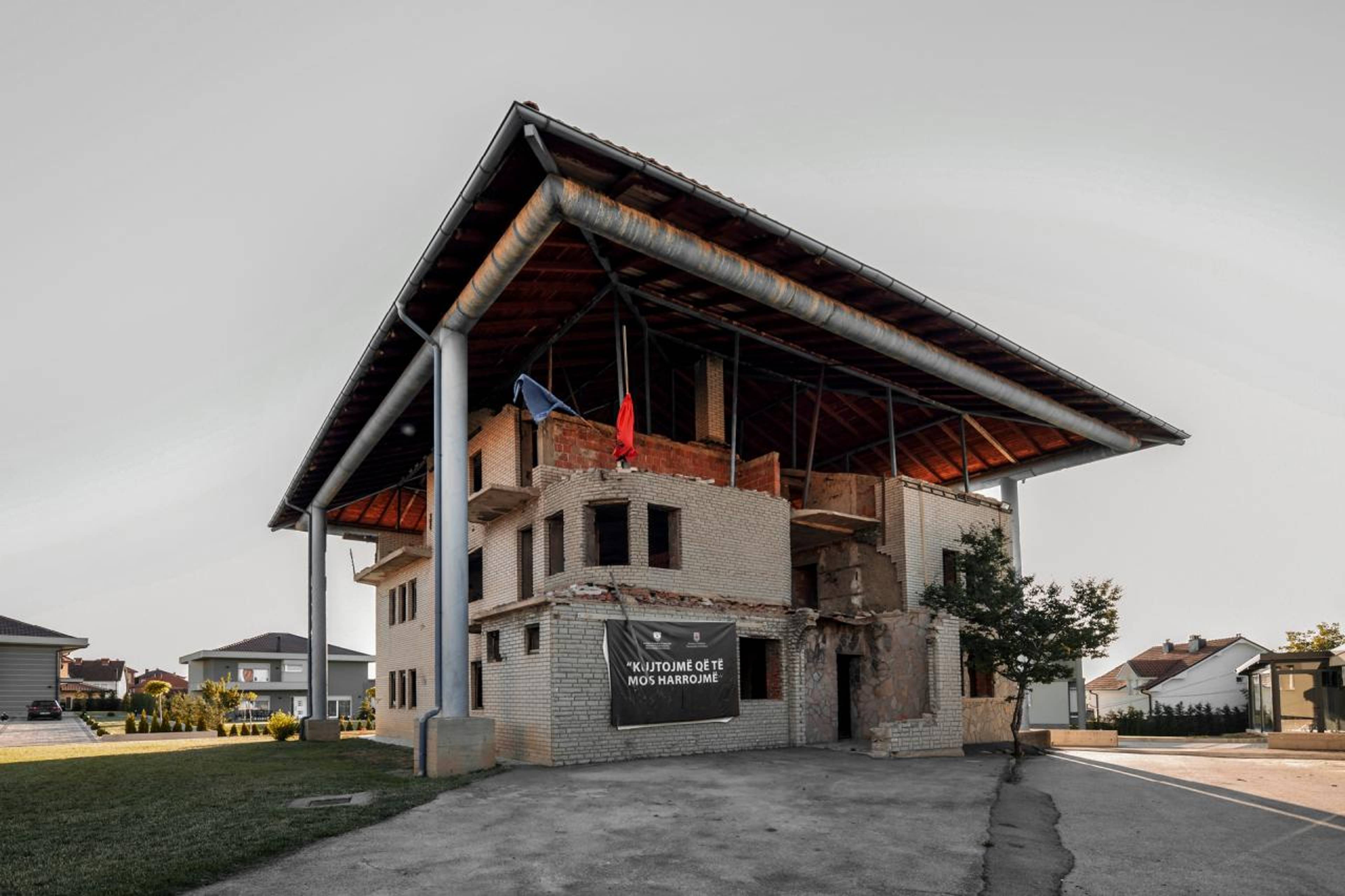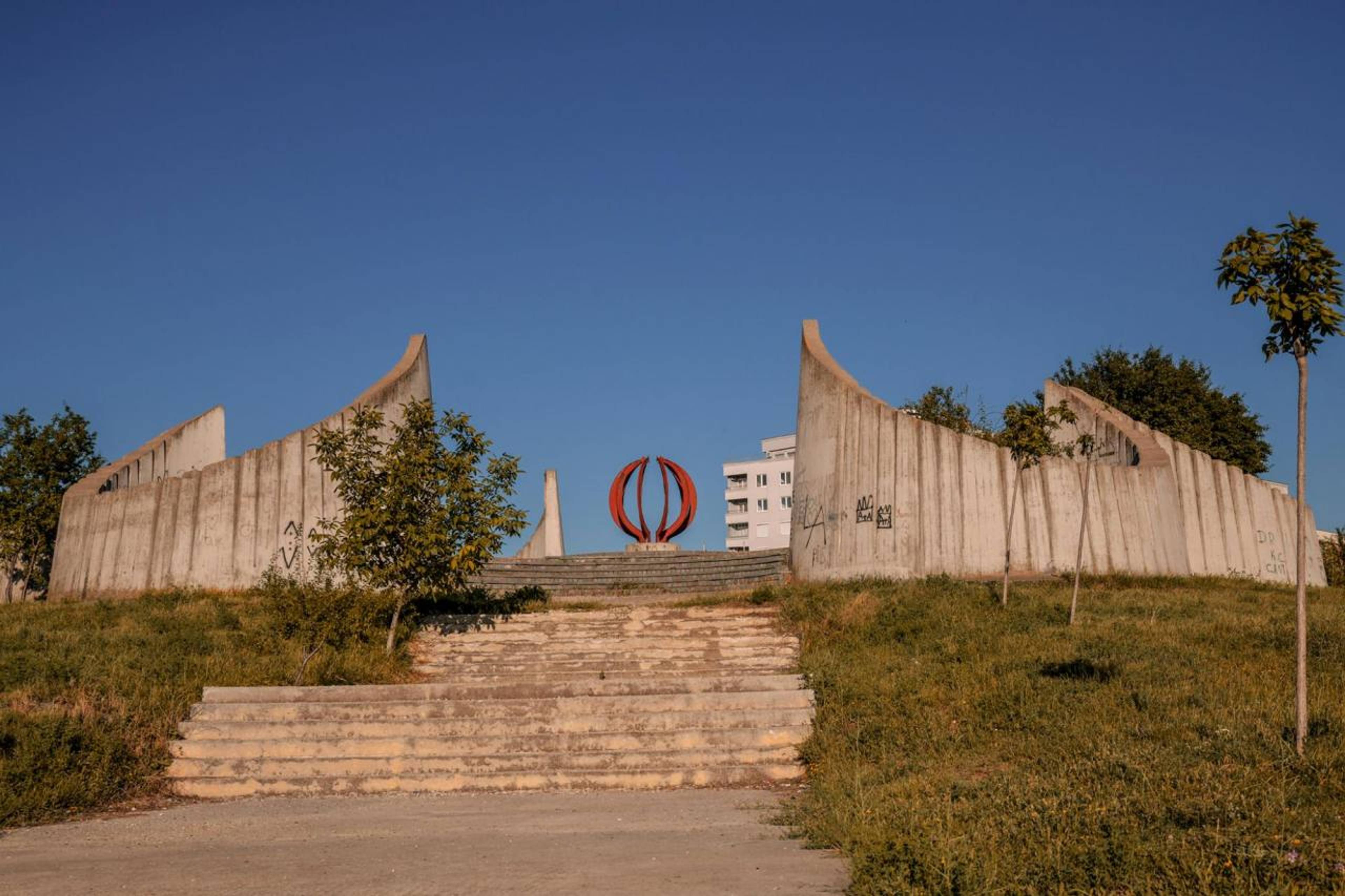An Paenhuysen: Hi Catherine, how are things in Prishtina?
Catherine Nichols: It’s pretty hot. There are hordes of children playing in the fountain, stray dogs lying comatose in the shade, watermelons and ice creams everywhere you look. There’s the usual friendly vibe on the streets.
AP: When I heard about the biennial title, “Worlds world worlds,” I thought of Gertrude Stein: “a rose is a rose is a rose.”
CN: I drew the quotation for the title – and many of the central ideas for the artistic program – from Donna Haraway’s thinking. In Staying with the Trouble: Making Kin in the Chthulucene [2016] she talks about it mattering which ideas we use to think other ideas with, which concepts conceptualize concepts, what stories we tell to tell other stories with – and what worlds world worlds. Haraway herself was inspired by Marilyn Strathern, a British social anthropologist. Yet if I’m thinking about the generative force of language, about its capacity to bring forth new imaginaries, to world, as it were, then Gertrude Stein is not very far away.
AP: The subtitle states, “how to tell stories otherwise.” Is there any specific scene that you think of when a story is/was told otherwise?
CN: I have a very early, rather transformative memory of seeing Gandhi at the movies with my parents in a run-down cinema that people used to call “the flea house.” It’s at Avoca Beach, about one hundred kilometers north of Sydney. I must have been about seven or eight years old when I saw the film. I remember the adults sitting around after the movie and talking about the historical accuracy of the narrative – in those days, no one seemed bothered about the fact that Ben Kingsley was playing Gandhi – which was fascinating to me. Learning that there wasn’t one history, one truth, that what I had been watching was an interpretation, that stories and storytelling are inherently partial was profoundly disquieting and yet somehow exciting. Later I found it liberating. As you’ll see when you come to Manifesta 14, there are many, many artists, thinkers, makers who put forward multifarious ideas about how to tell stories otherwise. In this biennial, it’s less about pointing out the trouble we’re in, to use Haraway’s terminology, than about thinking of ways to “stay with” that trouble.
AP: Storytelling, especially collective storytelling, is central to your concept for the Manifesta. You also studied literature yourself. Would you say that curating is for you like writing a story, not on paper but in a space?
CN: Yes, for me narrative techniques play a crucial part in exhibition-making, although the artworks or cultural artefacts definitely retain, or rather assert, their own authorial voice within the overarching narrative. It’s always a balancing act to bring voices, positions, and stances together in a manner that is coherent and challenging, in a manner that respects the autonomy and agency of each approach and gives it room to unfold.
Portrait of Catherine Nichols
AP: What is the genre you’re curating in?
CN: I’d say what I’m doing is most closely aligned with poetic techniques. Curating is about linking objects, figures, forms, or associative entities of some kind together in space. Somehow that always makes me think of the dynamic poetic space you encounter in the work of Stéphane Mallarmé, for example, or any kind of concrete poetry: semantic units come into contact with one another, with the white page, with their own sound and shape and the sound and shape of other words, whether sensical or nonsensical. The appearance and positioning of the words are as essential as their meaning. The eye teams up with the ear and the mouth to form the syllables and with the inner ear, as it were, to “read” the score-like textual entities into being. Applied to the spatio-temporal experience of an exhibition, which is realized by numerous actors, the visitor can’t help but perceive the act of perceiving as a sensory, creative event that, to cite Russian literary theorist Viktor Shklovsky, “awakens” the “mind’s attention from the lethargy of custom.”
AP: Was there, initially, a specific encounter in Prishtina that brought about this idea to curate a biennial that focuses on collective modes and practices of storytelling?
CN: Yes, the realization that in Prishtina storytelling was the story came to me fairly quickly once I started spending time in the city. I had a small inkling before I travelled there because Hedwig Fijen, the director of Manifesta, had given me access to the findings that had come out of the lengthy pre-biennial process. The in-depth research and citizen’s assemblies and consultations play a crucial role for Manifesta in working out how to try to achieve long-term urban and social transformation. That’s something that really appeals to me about this biennial model. All the research on the urban landscape and infrastructure, on subcultures and the cultural memory of the many derelict and abandoned buildings across the city is published as part of the program, by the way. But it was in spending time with people – artists and architects, writers, historians, thinkers, activists, workers – and in visiting them, that I was struck – and inspired – by the number of people and initiatives working in some way with narrative techniques to grasp, to counteract, to overcome, to heal the sustained policy of material and immaterial erasure and the dispossession and displacement of a large proportion of society. They use storytelling practices to stay with the trouble, to tell stories otherwise.
The National Library of Kosovo
The Grand Hotel in Prishtina
AP: The various locations where the Manifesta takes place bring along their own stories. Especially the Grand Hotel speaks to my imagination – it has the sound of a different age. Is there anything still grand in the 21st century?
CN: It’s true. That’s captivating thing about working in a city like Prishtina where you encounter so many strange juxtapositions of architectural styles – Ottoman, socialist, turbo-capitalist, and, primarily, pragmatic – and so many layers of history, shared experience, collective memory, loss, and violence past and present. The Grand Hotel is a case in point. And there your imagination has definitely taken you down the right path. It used to be a five-star hotel, but the post-conflict wave of privatization across Kosovo and the former Yugoslavia precipitated the already vulnerable building’s decline. If it’s still grand, which in a way it is, it’s a faded, haunted, green-carpeted grandeur. But I guess ultimately at Manifesta 14 we’re looking less at what is or was grand, than what could be grand. And what could be grand is probably less about red carpet and fancy chandeliers, less about heroic narratives than about working out practices of thinking and working together to address the most imminent concerns facing humanity.
AP: How is it to enter as a curator in spaces that have a different function than exhibiting contemporary art?
CN: First of all, it requires a lot of time and sensitivity to properly listen, to properly attune your mind to the histories of a certain place of cultural significance, especially when that significance is not physically manifest or visibly inscribed in the material remains of the space. And when the history is as conflicted and the trauma still so palpable as it is in Kosovo, then the responsibility is even greater. Engaging with derelict buildings – whether it’s a cinema, a brick factory, a printing house, or an observatory – is not something you can do in a cursory manner. Not only does it require you to read everything you can get your hands on, but also to have as many conversations as possible, to speak with all different kinds of people, to pick up on their memories of what the places used to be like, what happened there, how they fell into disrepair, or how they have been used for all sorts of purposes, and how many of them have just been saved in the nick of time from being demolished or turned into a supermarket.
So, the most significant difference about moving beyond the white cube, is that the choice of artists and projects is very much contingent upon an understanding of the site. The other major difference is of a practical nature. You can’t just walk into a space, paint the walls, and start installing. Before you can do anything, you have to deal with a whole host of heritage questions and conservatorial issues. You have to gain permission to use the buildings and secure the often rather dangerous sites for visitors, not to mention the complexity of the installation process itself. It’s immensely challenging for the whole team – and yet equally rewarding. I’m really privileged to be working with an extraordinarily talented and dedicated production team, which is made up of locals and internationals. They’ve really made the seemingly impossible possible.
“The liberty sticks in my throat”
AP: In Berlin, at the Gallery ChertLüdde, there was the screening of a short movie, I Have Never Been on an Airplane by Redon Kika, a young Kosovo actor and filmmaker. It’s about what it’s like to not be able to travel due to visa liberalization issues in Kosovo. It must be awkward to arrive from an international art world to a place where artists are quite stuck, literally, as the basic human right to move is absent.
CN: It is more than awkward. The liberty sticks in my throat. Today I walked past a protest outside the building of the European Union. Young people were standing inside a cage to express their rage and frustration. It was hoped that this year would finally bring visa liberalization to Kosovo – after twenty years of waiting. Yet, not one of the leaders of European countries addressed the issue of visa liberalization for Kosovo at last week’s summit. Four years ago, the country was told by the European Commission that it had met all the criteria for visa-free travel, but that promise wasn’t upheld. For the people here, the fruitless pursuit of the simple right to travel, the endless waiting is utterly disheartening and suffocating. It doesn’t matter who you speak to, everyone will tell you that their situation amounts to incarceration. All the neighboring countries have been granted the right to visit the EU. Only Kosovo has been marginalized.
AP: When I visited Prishtina about five years ago, I visited a former boxing club that had been transformed into a cultural center. There was an exhibition opening of Roma and Sinti artists, a band was playing, there was delicious food served. It was a great atmosphere. Is that place still there?
CN: Yes, it is. Stacion is still one of the most important venues for contemporary art in Prishtina. Apart from giving artists a platform and bringing all kinds of different artists and theorists to Prishtina, it also hosts a very well-respected summer school each year called Summer School as School. Stacion hosts the Artists of Tomorrow Award, too.
AP: You have visited many art communities in the Western Balkans. What has stood out to you most?
CN: I would say the energy of the artistic communities in creating and somehow sustaining a cultural scene with so very little support from the government and such limited cultural infrastructure. Most of the countries suffer from having only a few institutions and hardly any commercial galleries or collectors to make it somehow possible to survive as an artist. Even though most people are frustrated by the difficulty of shifting the attitudes of policymakers when it comes to culture, there is still a lot going on. And I found each of the cultural scenes to have great solidarity with one another. There’s a strong support network, not just within the various scenes, but also between the different scenes across the region. Everyone seems to know each other – every time I try to introduce people to one another they laugh and tell me they’ve known each other for years. Most people seem to do what they can to give each other opportunities.
AP: You choose to exhibit many Kosovar artists – more than half of the Manifesta artists are based in the region. The international press was surprised. Were you yourself surprised by this outcome? Was it a conscious decision or did it just turn out to be this way?
CN: I wasn’t really surprised. Since Manifesta is always situated, or rather embedded, in the city that invites it, in this case Prishtina, then that city necessarily forms the point of departure. The place and the people who live there set the questions, open the dialogue, invite others from elsewhere to join in the thought process, to think where their own concerns, desires, and practices might intersect with those of the host city. So, I began by immersing myself in the local cultural scene and moved out from there. Voices from Kosovo converse with voices from around thirty different countries – from Korea and Brazil to South Africa and Turkey – around the central themes of the biennial: transition, migration, water, capital, love, ecology, and speculation. Like any curator, I chose the practices I found the strongest, the ones I thought would speak to, would touch people profoundly and generate the most thought-provoking dialogue. I’m pleased that the selection evolved the way it did, and that the region is well represented, but I’m guided by questions, not by quotas or numbers.
The Hertica School House
The Partisan Martyrs’ Cemetery Monument
The Palace of Youth and Sports
AP: You’re curating a specific form of biennial – it’s nomadic and it also has the ambition to empower the local communities, and this long term, also after the biennial has left town. What can we find in this kind of international exhibition that one doesn’t encounter at other biennials?
CN: Well, apart from the embeddedness of the biennial in the urban infrastructure and social fabric, with a large proportion of the content generated by and in collaboration with people from Prishtina and Kosovo, what’s specific to this model of biennial is, as you suggest, its commitment to long-term urban and social transformation. The question is, how that commitment is made manifest, how it can be sensed or read or perceived. The answer to that question varies from one edition of Manifesta to the next. This edition we’re concentrating on working with the local community to establish an institution that will continue after the biennial. Hedwig Fijen has pointed out the importance of securing the necessary funding to guarantee that kind of ongoingness. From past attempts at institution-building, she knows that it’s not enough to set up the institution, you really need to ensure that it has the monetary foundations to keep itself afloat. The institution we’re collaboratively working to bring forth is called the Centre for Narrative Practice. It’s situated in a much-cherished former library, which closed its doors – and its beautiful garden – to the public in 2016. Like many public buildings in Prishtina, it fell into ruin quite rapidly after being abandoned. Now the site is being restored to the public as a place of shared experience and collective learning. In a way, it encapsulates what our whole team would like to see Manifesta 14 contribute to the cultural landscape: it returns a lost building to the citizens in a manner that responds to the desires they have expressed. It’s a place to read and to listen to stories, a place to learn new ways of telling stories, and a place to reflect on how we use storytelling to engage with one another, to take part in public and political life and to bring forth new imaginaries and ways of being. Whether you’re five or seventy-five, you can do all kinds of things there from self-publishing to podcasting, from reading and research to conservation, archiving and urban gardening. But the library is only one of twenty-five intriguing venues.
AP: Last year, you curated Beuys 2021 in North-Rhine Westphalia, which was an all-encompassing program with exhibitions, a conference, a university, and a radio. Are you taking Beuys along to the Manifesta? I’m sure he would have enjoyed that.
CN: Beuys’s idea of social sculpture will certainly be in attendance, but he is only one of many influences. If Beuys were to visit Prishtina, he’d probably rather fancy himself in the role of mayor, as he did when he visited New York back in the 1970s. I think two good friends of Beuys will be coming to Prishtina, though: René Block and Kasper König. So, I guess in a way, he’ll be here in spirit.
AP: Last question: I read on the Manifesta website that there is a sweet shop called Elida in the Palace of Youth and Sports, one of the locations of Manifesta. Any favorites you would recommend?
CN: Elida is legendary – for sweets and matchmaking dates. I’m more of a coffee lover than a sweet tooth, though, so I’m going to recommend macchiatos instead. Prishtina seems to have truly perfected the art. I’m hooked – on the coffee, the place, and most of all the warm-hearted people.
___
Manifesta 14
Various venues, Prishtina
22 Jul – 30 Oct 2022


